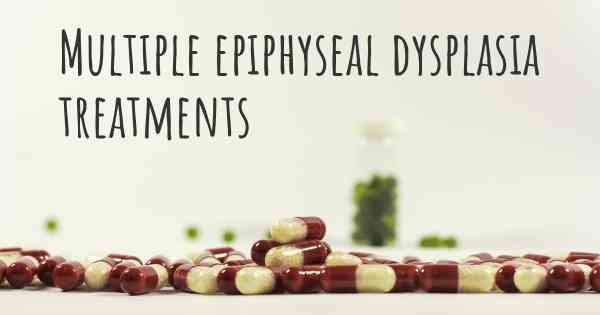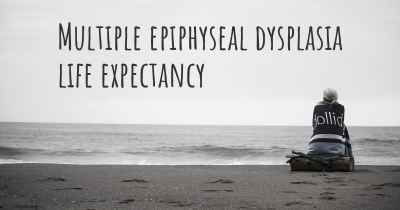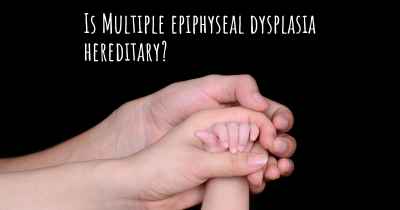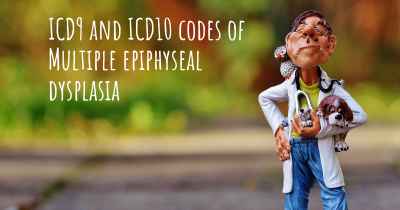What are the best treatments for Multiple epiphyseal dysplasia?
See the best treatments for Multiple epiphyseal dysplasia here

Treatments for Multiple Epiphyseal Dysplasia
Multiple Epiphyseal Dysplasia (MED), also known as Fairbank disease, is a rare genetic disorder that affects the development of the bones and joints. It primarily affects the growth plates, which are responsible for bone growth and development. MED can cause various symptoms, including joint pain, stiffness, limited range of motion, and skeletal abnormalities. While there is no cure for MED, several treatments can help manage the symptoms and improve the quality of life for individuals with this condition.
1. Physical Therapy
Physical therapy plays a crucial role in managing the symptoms of MED. A skilled physical therapist can design a personalized exercise program to improve joint mobility, strengthen muscles, and enhance overall function. These exercises may include stretching, range-of-motion exercises, and low-impact activities such as swimming or cycling. Physical therapy can help alleviate pain, improve joint stability, and enhance the individual's ability to perform daily activities.
2. Pain Management
Pain management is an essential aspect of MED treatment. Over-the-counter pain relievers, such as acetaminophen or nonsteroidal anti-inflammatory drugs (NSAIDs), can help reduce pain and inflammation. However, it is important to consult with a healthcare professional before taking any medication, especially for long-term use. In some cases, stronger pain medications or injections may be prescribed to manage severe pain.
3. Assistive Devices
Assistive devices can provide support and improve mobility for individuals with MED. Orthotic devices, such as braces or shoe inserts, can help stabilize joints, reduce pain, and improve alignment. Canes, crutches, or walkers may be recommended to assist with walking and reduce stress on the joints. These devices can help individuals maintain independence and improve their overall quality of life.
4. Surgical Interventions
In severe cases of MED, surgical interventions may be necessary to address specific complications or skeletal abnormalities. Surgery can help correct deformities, improve joint function, and alleviate pain. Procedures such as osteotomies (bone reshaping), joint realignment, or joint replacement may be considered based on the individual's specific needs and the severity of the condition. It is important to consult with an orthopedic surgeon specializing in genetic bone disorders to determine the most appropriate surgical approach.
5. Genetic Counseling
Genetic counseling can be beneficial for individuals with MED and their families. Genetic counselors can provide information about the inheritance pattern of MED, discuss the risk of passing the condition to future generations, and offer guidance regarding family planning options. Understanding the genetic basis of MED can help individuals make informed decisions and cope with the emotional aspects of the condition.
6. Emotional Support
Living with a chronic condition like MED can be challenging both physically and emotionally. It is important to seek emotional support from healthcare professionals, support groups, or counseling services. Connecting with others who have similar experiences can provide a sense of understanding, validation, and coping strategies. Additionally, counseling or therapy can help individuals and their families navigate the emotional impact of living with a genetic disorder.
In conclusion, while there is no cure for Multiple Epiphyseal Dysplasia, various treatments can help manage the symptoms and improve the quality of life for individuals with this condition. Physical therapy, pain management, assistive devices, surgical interventions, genetic counseling, and emotional support all play important roles in the comprehensive management of MED. It is essential to work closely with healthcare professionals to develop an individualized treatment plan that addresses the specific needs and challenges associated with this rare genetic disorder.
Posted Mar 4, 2017 by Sarah 2000
Posted Mar 5, 2017 by Chloe_MED 820
Posted Nov 19, 2017 by Daniela Corrêa De 2500








